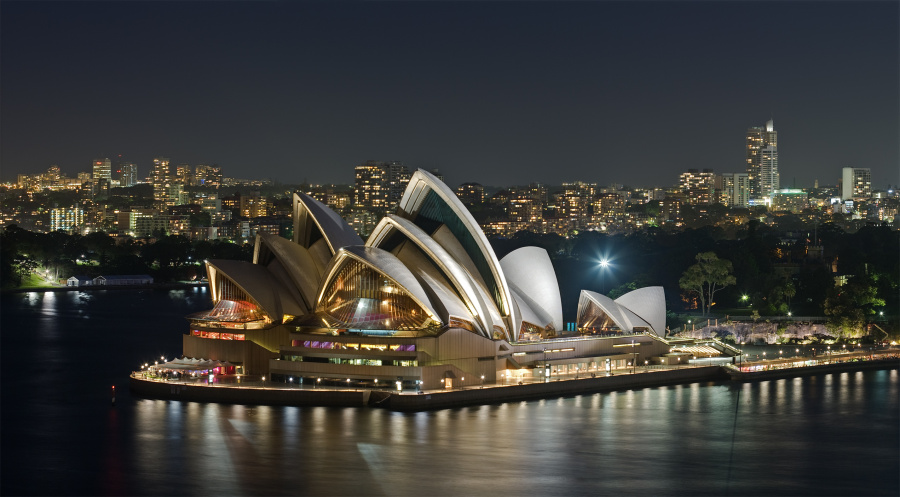National governments across the globe are showing a growing appreciation for the economic importance of cities. In taking an increasingly strategic approach to the development and management of powerful economic and cultural urban nodes, they’re attempting to diversify economies and invest money where it matters most. In the wake of the recession, this policy shift has been particularly strong in the UK.
Australia on the other hand, seems to be moving in the opposite direction. With the end of the resources boom in sight, perhaps it’s time ‘the lucky country’ took a long, hard look at its urban agenda. For hundreds of years, we’ve been obsessed with the nation-state paradigm. But the idea of inter-national coordination has largely failed. The United Nations has no teeth, every climate talk since Rio (1992) has failed to bring practical solutions, and the global recession has presented us with panicking national governments with little control over globalised economic systems.
With over half of the world’s population now living in urban areas, we’re seeing the emergence of a network that is more about action than stubborn nationalism. Operating across international borders, our global network of cities forms the economic and environmental collaboration that national governments cannot.
As Benjamin Barber has put it, national governments are based on “ideology”, while cities are all about “getting things done”. Cities are bound together by trade and economics, innovation and entrepreneurship, common attributes and common values. Cities are where things happen; national governments are where politicians talk.
The growing realisation of the importance of cities has sparked policy shifts worldwide: Korea is scaling-up regional city growth to diversify economic activity, Poland has recently developed a national urban strategy to become economically competitive with greater Europe, and Brazil has created a City Statute to give municipalities increased power and finance.
The UK has seen the development of a Cities Policy Unit and a host of new strategies that attempt to create a fundamental movement away from federal power to that of mayors and cities. The newly appointed Minister for Cities has called for a new era to create city systems and systems of cities. The former is concerned with equipping local leaders to strengthen productivity, liveability and sustainability outcomes, and the latter is about actively supporting urban networks as a whole, including connectivity and city specialisation. This includes investing into infrastructure such as broadband, high-speed rail and airports. The Technology Strategy Board has already made substantial investments into the Future Cities Demonstrator and Future Cities Catapult, which aim to enhance urban innovation.
With growing importance on the city scale, urban political leadership is now a hot topic. Charismatic mayors like Boris Johnson and George Ferguson are winning support by implementing real solutions to environmental and economic issues. Less focused on ideology and more focused on answers, its no wonder Johnson has been titled the most popular politician in Britain over his central government counterparts.
Tucked down on the other side of the world however, we’re seeing powers taken from Australian cities and mayors, rather than given to them. After almost a decade of developing a vibrant nighttime economy, Sydney Mayor Clover Moore’s work has been badly bruised by conservative state premier’s controversial new drinking laws. O’Farrell’s arbitrarily located restrictions are not supported by any research to indicate that they will reduce violence. Instead, they look to create late night transit chaos and hamper Sydney’s buzzing nightlife economy.
Rather than developing a strategy based on citywide coordination, it seems the new legislation was an opportunity for the state premier to simply flex his political might. While Mayor Clover Moore is about “getting things done”, O’Farrell’s policies are based on political gain.
Issues such as these are all too common in Australia. As underfunded local councils struggle to coordinate important planning processes with the powerful state governments above, planning and economic development remains an under-resourced, ad hoc process. Australia is in serious need of city systems and systems of cities strategies.
Just two years ago there was progress in making this happen. Australia’s previous government created the Major Cities Unitwhich outlined key long-term priorities for urban productivity and sustainability. Highly regarded by academia, as well as infrastructure, planning and property councils, the Unit showed promise for strategic city alignment, including investment into high-speed rail.
Today, all investment into the Unit has been withdrawn and momentum towards a national urban strategy has come to a halt. Not only does Prime Minister Tony Abbott have blatant disregard for the natural environment but he also struggles to see the importance of investing into research and long-term strategy, even when concerned with economic growth.
Australia remains plagued by a three-tiered governance structure that stifles coordination: citywide governance is fragmented (dozens of local councils with no metropolitan authority), local to state government relationships are a political battle, and federal intra-city investment is non-existent.
Countries affected by recession have worked to develop national policies to diversify industry and build economic resilience. In the meantime, Australia has stood back with its eyes closed. With the resource boom beginning to slow, perhaps now’s the time for Australia to rethink how its cities can develop and integrate into the growing global urban network.
This article was originally written for This Big City and is also available in Spanish.
Feature image courtesy This Big City.























